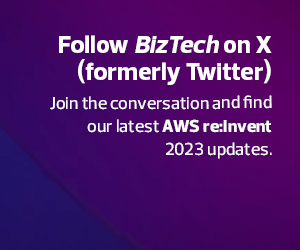How AWS Offerings Can Boost Observability
In a separate session at the event, Dilip Kumar, vice president of AWS applications for Amazon Web Services, noted that “most organizations use somewhere between 50 to 100 SaaS applications on a regular basis. Now, while this has been super popular with employees, it is not necessarily as popular for IT administrators or security professionals working at companies, because they lose the ability for observability, which is a critical part of the job.”
To help its customers contend with this proliferation of apps, AWS announced AWS AppFabric earlier this year. Kumar explained that AppFabric allows AWS to connect multiple SaaS applications and normalize all log formats so that the individual Software as a Service applications don’t have to do it, thereby connecting the apps to the security platforms that the organization is using.
“So, if you’re a security professional in a company, or if you’re an IT administrator, you get the level of observability that you’ve always wanted,” he said. “But now you can do this without any of the unnecessarily heavy lifting. There’s a reason why AppFabric has become very popular very quickly with customers: it’s because it specifically hit on what IT administrators and security professionals have been craving.”
DIVE DEEPER: Find out how automation can drive efficiency for your organization.
How AI Can Be Leveraged to Improve Security
While there are legitimate fears about how cybercriminals will leverage artificial intelligence to execute more sophisticated attacks, the technology can also be used to help anticipate, prevent and remediate after attacks. “Combining sophisticated tooling with skilled engineers is highly effective because it puts people in a position to make the nuanced decisions that are required for security,” Schmidt said.
“No matter what you might hear in marketing somewhere else, AI cannot do that on its own. Let me be clear: AI is one of those technologies that allows us to make a leap forward and it will impact all layers of our security. It helps our people be more efficient and more effective. It’s already radically changing our business and how it works. And when used as a complement to other tools with appropriate human review, it can help security controls be more effective,” he said.
In a related session, Emily Mossburg, global cyber leader at Deloitte, said, “Coming from a cyber point of view at Deloitte, our ‘impossible’ is a world where cyberattacks are no longer credible threats. And I really believe that we can move closer to that direction through building secure environments where customers and partners can share security, data, threat intelligence, and we can power those environments with generative AI and machine learning models. Those models will help make getting to security autonomy a reality.”














